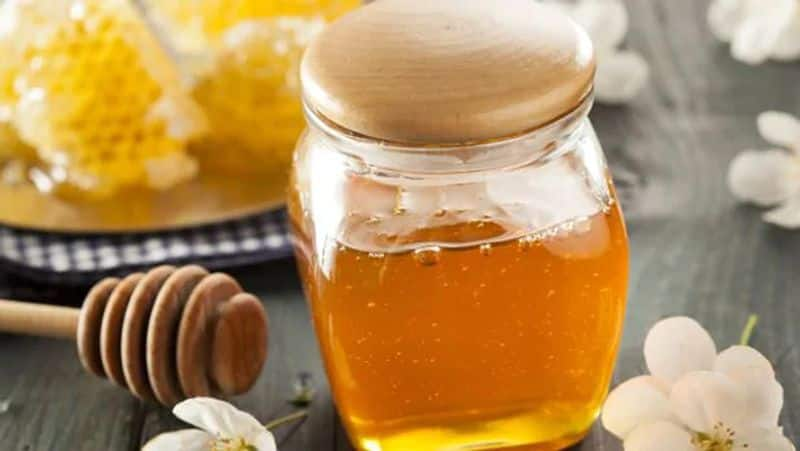Honey: Know about it’s myths, varieties and Ayurvedic importance
India exports 90% honey, but is unable to sell pure honey because of this misconception.USA and European countries don’t have such misconceptions, thus are able to gain maximum benefits from honey.

Honey is considered a magical ingredient that can be used to treat many conditions. It is best in easing the symptoms of respiratory diseases, as it can alleviate the inflammation of the airways of the lungs. At the same time, the natural sweetener is also a potent antioxidant and antibacterial agent. Additionally, the highly nutritious honey is a great source of natural minerals, helps strengthen immunity, is a natural source of energy and aids in digestion, as well as helps manage weight.
However, it is essential to use pure honey that is non-adulterated and without any preservatives. While the best honey is collected from the wild forests of Ranakpur, Udaipur and Ranthambore, consumers must identify the best quality honey. Many brands are available, but what are the criteria for picking the best quality honey? Firstly, ensure it is prepared using the non-heating process mentioned by Ayurveda. Secondly, make sure that you buy honey that crystallises at room temperature. Wait, are you also confused? Why would anybody buy honey that does not seem fine or is not in the conventional liquid form?

Well, the answer is simple; it is a myth that crystallised honey is not pure honey. In fact, it is considered adulterated, as a common perception. However, just to clarify, crystallised honey is a natural phenomenon. Honey is naturally liquid when extracted from the hive, but over time, it crystallises. A pot of 3000-year-old honey was found at an Egyptian pyramid, and it was still eatable as the honey had crystallised. That is how long honey can stay edible.
Let’s examine the science behind honey crystallisation to understand why it crystallises. Honey is a combination of dextrose and levulose, which account for about 70% of the total amount and a small percent of sucrose. Honey in the wax-laden hive is kept at a temperature of 35 degrees; thus, natural honey is found in liquid form. This honey crystallises due to the change in temperature after harvesting, as dextrose starts solidifying.
This crystallisation depends on 4 factors. Firstly, the types of flowers around the beehive impact the crystallisation as every flower has different level of dextrose and levulose. More the dextrose, higher is the crystallisation speed. That is why honey from mustard flowers crystallises faster compared to jamun flowers. Secondly, the presence of impurities like dust, bee pollen, wax pollens also become the nuclei of crystallisation and speed up the process. Thus ensure that these impurities have been filtered out.
Thirdly, temperature also impacts the crystallisation as the process becomes faster in colder temperatures, which is why we should not refrigerate honey. And lastly, we need to take into account the mobility factor of honey. Honey that is used daily may crystallise slower as compared to a bottle kept untouched for a long time. This is because movement ensures that crystals do not settle to form a thick layer.
If honey crystallises quickly then the texture of honey will be smooth due to smaller crystal particles but the one crystallising slowly will have a grainy texture due to larger sized crystals. The tendency of honey to crystallise helps it to stay eatable for a long time. Natural honey teds to crystallise while synthetic and denatured honey does not crystallise at all. Such honey undergoes high heat and ultra filtration to prevent it from crystallisation. Also, chemicals are added at times. High fructose Corn syrup or rice syrup is often used in commercial honey as it does not crystallise. And we would certainly want to avoid it.
India exports 90% honey, but is unable to sell pure honey because of this misconception.USA and European countries don’t have such misconceptions, thus are able to gain maximum benefits from honey. Crystallised honey is sold as set honey at good rates. Thus, the best quality honey is exported but at low cost as bee keepers are unable to sell pure honey to consumers due to this misconception.
So, what do we do if honey crystallises? Then just keep it in direct sun light or in a container with warm water, when it reaches temperature higher than 40 degrees, the honey returns back to its liquid form. But make sure that the heat is not more than 45 degrees. Or simply stir the honey vigorously with a spoon and you will get the de crystallised honey. With this new found knowledge, you can draw from the many benefits of honey, and live a healthy life.